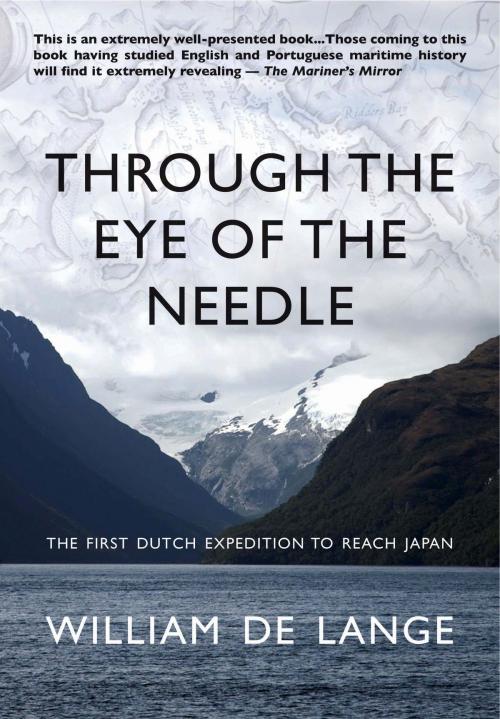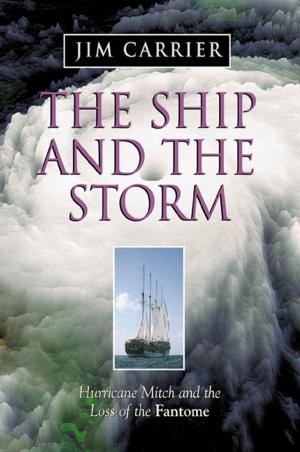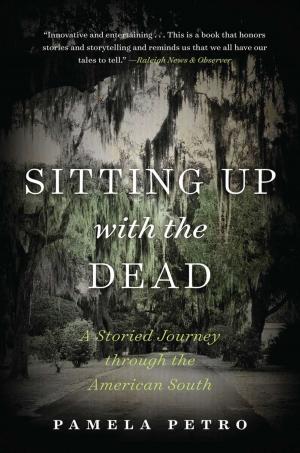Through the Eye of the Needle
The First Dutch Expedition to Reach Japan
Nonfiction, History, Asian, Japan, Travel, Adventure & Literary Travel| Author: | William de Lange | ISBN: | 9781891640698 |
| Publisher: | Floating World Editions | Publication: | January 29, 2013 |
| Imprint: | Language: | English |
| Author: | William de Lange |
| ISBN: | 9781891640698 |
| Publisher: | Floating World Editions |
| Publication: | January 29, 2013 |
| Imprint: | |
| Language: | English |
This is the harrowing account of arguably the most ill-fated expedition in the long maritime history of the Low Countries. At the end of the 16th century five heavily armed ships sailed from the port of Rotterdam under the command of men who had never set foot on a seagoing ship. Their plan was to sail through the treacherous Strait of Magellan and raid the western coast of Latin America as had the Englishmen Drake and Cavendish. Storms, disease, and general inexperience were to upset those ambitious plans in unexpected ways.
The terrible hardships suffered in the course of the subsequent two years became an almost biblical trial of the officers and crew--a trial the outcome of which seemed to scorn the ships' talismanic names: Faith, Hope, Love, Fidelity, and The Gospel. Instead, treachery, betrayal, mutiny, and mayhem were the grim rewards of this fateful journey. Out of the five hundred men who sailed, only a hundred survived and only a handful of those were ever to return home.
One ship did pass the test, but not in the way its owners had foreseen. It was through the offices of an English pilot that the ship called Love reached the as yet largely unknown islands of Japan and that the outcome of an otherwise so disastrous expedition was miraculously reversed. The pilot's name was William Adams, the near mythical yet real-life figure who became the hero of James Clavell's best-selling novel Shogun.
William de Lange was born in 1964 in Naarden, the Netherlands to Dutch and English parents. In the late 1980s, he aborted his English studies to embark on a journey that eventually led him to Japan, where he supported himself by making traditional Japanese scrolls and writing articles for the Japan Times Weekly. On his return to Holland, he entered Leiden University to make the highly controversial issue of the Japanese press clubs the focal point of his Japanese studies. In 1993, he returned to Japan on a scholarship of the Japanese Ministry of Education. Following his graduation, he lived in Japan for most of the remaining decade, studying the art of Japanese fencing under Akita Moriji sensei, eighth dan master of the Shinkage-ryu. He currently lives in the Netherlands, where he spends his time writing and translating books on Japanese subjects.This is the harrowing account of arguably the most ill-fated expedition in the long maritime history of the Low Countries. At the end of the 16th century five heavily armed ships sailed from the port of Rotterdam under the command of men who had never set foot on a seagoing ship. Their plan was to sail through the treacherous Strait of Magellan and raid the western coast of Latin America as had the Englishmen Drake and Cavendish. Storms, disease, and general inexperience were to upset those ambitious plans in unexpected ways.
The terrible hardships suffered in the course of the subsequent two years became an almost biblical trial of the officers and crew--a trial the outcome of which seemed to scorn the ships' talismanic names: Faith, Hope, Love, Fidelity, and The Gospel. Instead, treachery, betrayal, mutiny, and mayhem were the grim rewards of this fateful journey. Out of the five hundred men who sailed, only a hundred survived and only a handful of those were ever to return home.
One ship did pass the test, but not in the way its owners had foreseen. It was through the offices of an English pilot that the ship called Love reached the as yet largely unknown islands of Japan and that the outcome of an otherwise so disastrous expedition was miraculously reversed. The pilot's name was William Adams, the near mythical yet real-life figure who became the hero of James Clavell's best-selling novel Shogun.
William de Lange was born in 1964 in Naarden, the Netherlands to Dutch and English parents. In the late 1980s, he aborted his English studies to embark on a journey that eventually led him to Japan, where he supported himself by making traditional Japanese scrolls and writing articles for the Japan Times Weekly. On his return to Holland, he entered Leiden University to make the highly controversial issue of the Japanese press clubs the focal point of his Japanese studies. In 1993, he returned to Japan on a scholarship of the Japanese Ministry of Education. Following his graduation, he lived in Japan for most of the remaining decade, studying the art of Japanese fencing under Akita Moriji sensei, eighth dan master of the Shinkage-ryu. He currently lives in the Netherlands, where he spends his time writing and translating books on Japanese subjects.
This is the harrowing account of arguably the most ill-fated expedition in the long maritime history of the Low Countries. At the end of the 16th century five heavily armed ships sailed from the port of Rotterdam under the command of men who had never set foot on a seagoing ship. Their plan was to sail through the treacherous Strait of Magellan and raid the western coast of Latin America as had the Englishmen Drake and Cavendish. Storms, disease, and general inexperience were to upset those ambitious plans in unexpected ways.
The terrible hardships suffered in the course of the subsequent two years became an almost biblical trial of the officers and crew--a trial the outcome of which seemed to scorn the ships' talismanic names: Faith, Hope, Love, Fidelity, and The Gospel. Instead, treachery, betrayal, mutiny, and mayhem were the grim rewards of this fateful journey. Out of the five hundred men who sailed, only a hundred survived and only a handful of those were ever to return home.
One ship did pass the test, but not in the way its owners had foreseen. It was through the offices of an English pilot that the ship called Love reached the as yet largely unknown islands of Japan and that the outcome of an otherwise so disastrous expedition was miraculously reversed. The pilot's name was William Adams, the near mythical yet real-life figure who became the hero of James Clavell's best-selling novel Shogun.
William de Lange was born in 1964 in Naarden, the Netherlands to Dutch and English parents. In the late 1980s, he aborted his English studies to embark on a journey that eventually led him to Japan, where he supported himself by making traditional Japanese scrolls and writing articles for the Japan Times Weekly. On his return to Holland, he entered Leiden University to make the highly controversial issue of the Japanese press clubs the focal point of his Japanese studies. In 1993, he returned to Japan on a scholarship of the Japanese Ministry of Education. Following his graduation, he lived in Japan for most of the remaining decade, studying the art of Japanese fencing under Akita Moriji sensei, eighth dan master of the Shinkage-ryu. He currently lives in the Netherlands, where he spends his time writing and translating books on Japanese subjects.This is the harrowing account of arguably the most ill-fated expedition in the long maritime history of the Low Countries. At the end of the 16th century five heavily armed ships sailed from the port of Rotterdam under the command of men who had never set foot on a seagoing ship. Their plan was to sail through the treacherous Strait of Magellan and raid the western coast of Latin America as had the Englishmen Drake and Cavendish. Storms, disease, and general inexperience were to upset those ambitious plans in unexpected ways.
The terrible hardships suffered in the course of the subsequent two years became an almost biblical trial of the officers and crew--a trial the outcome of which seemed to scorn the ships' talismanic names: Faith, Hope, Love, Fidelity, and The Gospel. Instead, treachery, betrayal, mutiny, and mayhem were the grim rewards of this fateful journey. Out of the five hundred men who sailed, only a hundred survived and only a handful of those were ever to return home.
One ship did pass the test, but not in the way its owners had foreseen. It was through the offices of an English pilot that the ship called Love reached the as yet largely unknown islands of Japan and that the outcome of an otherwise so disastrous expedition was miraculously reversed. The pilot's name was William Adams, the near mythical yet real-life figure who became the hero of James Clavell's best-selling novel Shogun.
William de Lange was born in 1964 in Naarden, the Netherlands to Dutch and English parents. In the late 1980s, he aborted his English studies to embark on a journey that eventually led him to Japan, where he supported himself by making traditional Japanese scrolls and writing articles for the Japan Times Weekly. On his return to Holland, he entered Leiden University to make the highly controversial issue of the Japanese press clubs the focal point of his Japanese studies. In 1993, he returned to Japan on a scholarship of the Japanese Ministry of Education. Following his graduation, he lived in Japan for most of the remaining decade, studying the art of Japanese fencing under Akita Moriji sensei, eighth dan master of the Shinkage-ryu. He currently lives in the Netherlands, where he spends his time writing and translating books on Japanese subjects.















